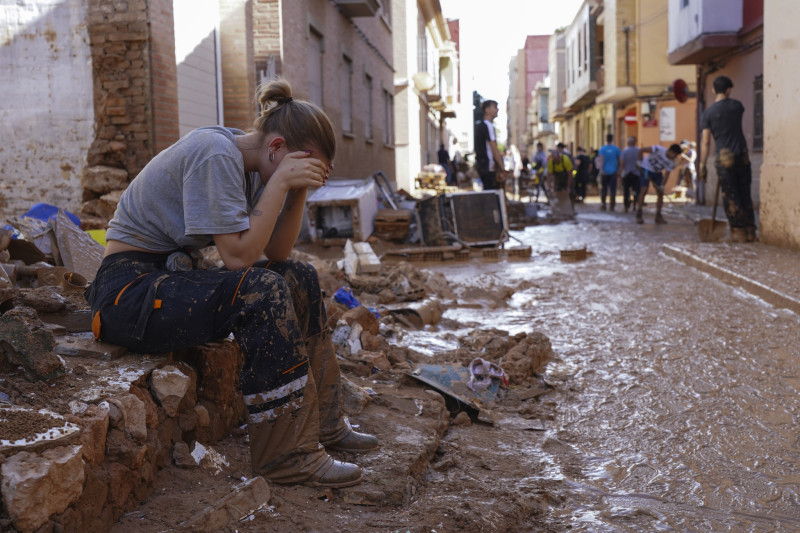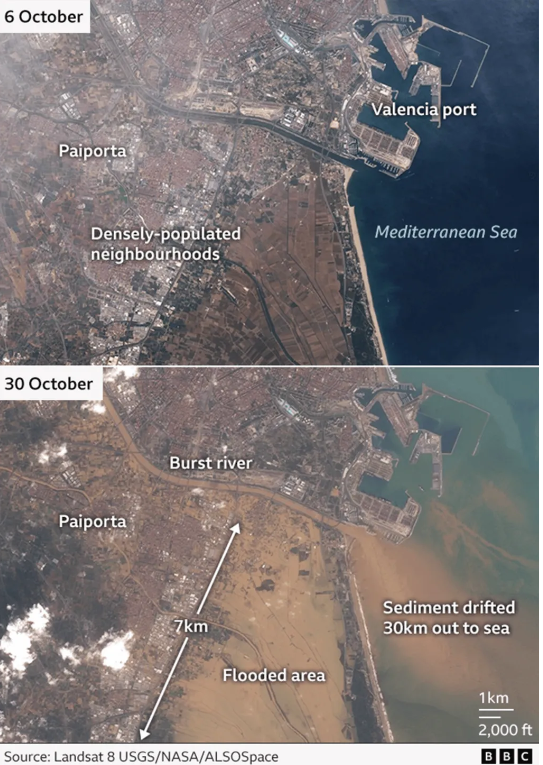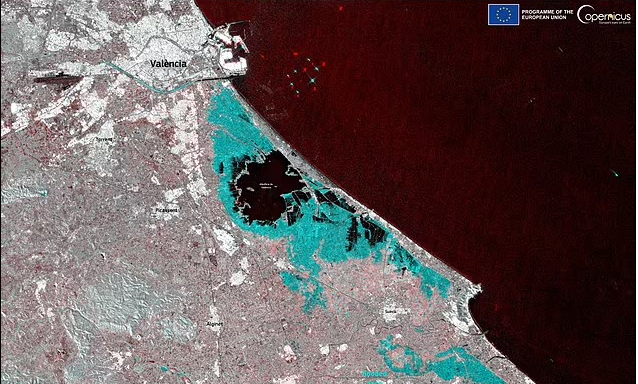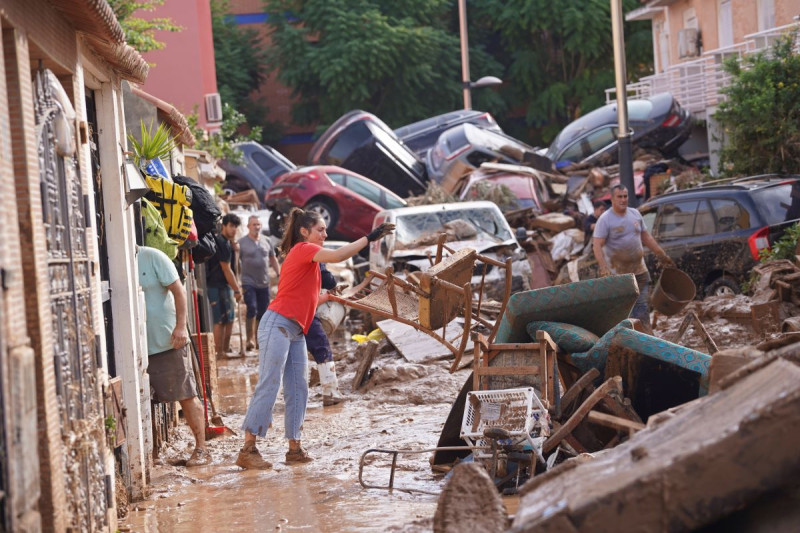Death toll exceeds 200 – City planning, poor planning by authorities, climate change are some factors in the tragedy
As Spain sees the death toll from the floods continue to rise (over 200) the big question that remains and torments them is one: why this tragedy happened.
Almost all the deaths confirmed so far have been in the Valencia region on the Mediterranean coast. Some areas have been particularly damaged: the city of Paiporta, population 25,000, reported at least 62 deaths.
Several factors, such as drivers trapped in their cars, poor planning by authorities and agencies and extreme rainfall exacerbated by climate change are likely to have contributed to this unspeakable tragedy, according to the BBC.
The civil protection service, overseen by the regional government, issued an emergency alert on telephones in and around the city of Valencia after 20:00 local time (19:00 GMT) on Tuesday, however, millimeters of rain were heavy and in in some cases the disasters had already begun.
Several dead were trapped in the streets, in many cases returning from their jobs.
The video shows how a first wave of flooding passed through Paiporta while cars were driving on the streets. Although rainfall was heavier in other areas such as Utiel and Chiva, the geography of Paiporta, with a ravine running through the center of the city it appeared to play a decisive role in the flooding.
Mayor Maribel Albalat said the city was poorly prepared in terms of planning, with many single-story apartments. Six residents of a nursing home died when water entered the building while they were still on the ground floor.
“In Paiporta we don’t tend to have floods and people are not afraid,” he said.
The garages also proved to be a special death trap. “When it rains people usually go down to their garages to get their cars out in case their garage gets flooded,” Ms Albalat said.
This seems to have happened in the neighborhood of La Torre, on the outskirts of Valencia, where the bodies of seven people were recovered from the garage of a residential building.
The A3 motorway linking Valencia to Madrid was one of several roads where drivers were trapped as water levels rose.
“There are almost certainly more people who died because the water swept them away while they were out of their cars,” one survivor told the Telecinco TV channel. Another survivor said the water was up to his chest.
An eyewitness described seeing a driver who had gotten out of his car and had tied himself to a lamp post with his seat belt to avoid being swept away by the water. It remains unknown if he managed to live.
Chiva Mayor Amparo Fort warned on Thursday that nearby there were still “hundreds of overturned cars and they will definitely have people inside”.
Another factor that explains why Valencia suffered so much destruction is that it is special densely populated.
The lack of rainfall throughout the year has left the soil in many areas of eastern and southern Spain unable to absorb rainwater effectively.
Pablo Aznar, a researcher at the Socio-Economic Observatory on Floods and Droughts (Obsis), warned that much of the affected area had suffered what he described as “unstoppable growth”, with many areas covered by impervious materials, which “increase the risk arising from these events”.
Climate warming is also likely to have contributed to the severity of the floods.
Source :Skai
With a wealth of experience honed over 4+ years in journalism, I bring a seasoned voice to the world of news. Currently, I work as a freelance writer and editor, always seeking new opportunities to tell compelling stories in the field of world news.















